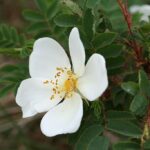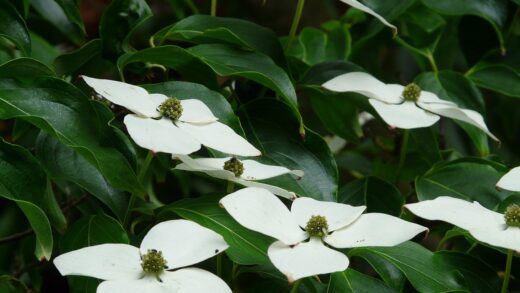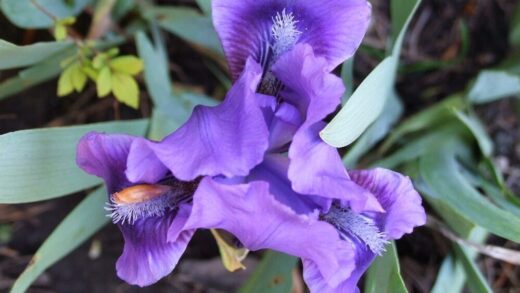Successfully guiding a passion flower through the winter is a critical aspect of its long-term care, particularly for gardeners in temperate climates where freezing temperatures pose a significant threat. Many of the most commonly grown Passiflora species are native to tropical or subtropical regions and lack the hardiness to survive a harsh winter outdoors without protection. The process of overwintering is more than just a survival tactic; it is a way to ensure the plant not only lives to see another spring but emerges from its dormancy healthy, vigorous, and ready to produce a spectacular display of flowers. Proper preparation and a clear understanding of the specific needs of your variety are paramount to achieving this success.
The first step in developing an overwintering strategy is to accurately identify the species or cultivar of passion flower you are growing and understand its specific cold hardiness. There is a vast range of cold tolerance within the Passiflora genus. For example, the blue passion flower, Passiflora caerulea, is one of the hardiest and can often survive outdoors in the ground with some protection in regions with milder winters. In contrast, many of the more tropical species, such as Passiflora quadrangularis (the giant granadilla), are extremely frost-tender and must be brought indoors before the first frost.
The overwintering method you choose will depend on this hardiness rating as well as your local climate. For marginally hardy varieties grown in the ground, providing a thick layer of mulch around the base of the plant can be sufficient to protect the root system from freezing. For more tender species, or for any passion flower grown in a container, the most reliable method is to bring the plant into a protected environment, such as a greenhouse, a conservatory, or a bright room inside the house. The goal is to keep the root system from freezing and to provide the plant with a period of rest.
Preparation for overwintering should begin in the late summer or early autumn, well before the first frost is expected. This involves gradually reducing the amount of water and ceasing all fertilizer applications. This process helps to slow down the plant’s growth and allows the existing stems to “harden off,” making them more resilient to the stresses of the colder months. It is also an ideal time to inspect the plant thoroughly for any pests and treat them accordingly, as you do not want to bring any unwanted guests indoors for the winter.
Preparing the plant for winter
The successful transition of a passion flower into its winter dormancy begins with proper preparation in the autumn. One of the most important steps for plants that will be moved indoors is a strategic pruning. Passion flowers are vigorous vines, and it is often impractical to bring the entire plant inside. Pruning the vine back significantly, reducing its overall size by as much as two-thirds, makes it much more manageable. This also reduces the amount of foliage the plant needs to support with its limited resources during the low-light conditions of winter.
More articles on this topic
When pruning for overwintering, focus on removing any weak, damaged, or overly long stems. Aim to leave a main framework of healthy, well-spaced branches. This hard pruning may seem drastic, but it is beneficial for the plant, as it will encourage vigorous new growth from the base and the remaining framework in the spring. It is on this new growth that the plant will produce its flowers, so this process effectively rejuvenates the vine for the season to come.
Before bringing the plant indoors, it is absolutely essential to thoroughly inspect it for pests. The warm, dry conditions inside a heated home can be an ideal breeding ground for common pests like spider mites, aphids, and mealybugs. Check the stems, leaf axils, and the undersides of the leaves carefully. It is highly advisable to treat the plant preventatively, even if you do not see any visible pests. A good spray with horticultural oil or insecticidal soap can help to eliminate any hidden insects or their eggs, preventing a potential infestation from taking hold over the winter.
For passion flowers that are hardy enough to remain outdoors in the ground, preparation involves protecting the root zone, which is the most vital part of the plant for its survival. After the first light frost has caused the foliage to die back, you can prune the top growth back to about one or two feet from the ground. Then, apply a thick layer of mulch, at least four to six inches deep, around the base of the plant. Materials like straw, shredded leaves, or compost can be used to insulate the roots and the crown of the plant from the freezing and thawing cycles of the winter soil.
Overwintering indoors
Bringing a passion flower indoors is the most reliable way to ensure its survival in a climate with cold winters. The ideal indoor location is one that is cool but remains above freezing, and receives plenty of bright light. A frost-free greenhouse, a conservatory, or a room with a large, south-facing window are excellent choices. The goal is not to encourage active growth, but rather to keep the plant in a state of suspended animation or semi-dormancy until the spring. An ideal temperature range for this rest period is typically between 7 and 13 degrees Celsius.
More articles on this topic
Watering during the winter months must be drastically reduced. The plant’s metabolic processes have slowed down, and its water uptake is minimal. The soil should be allowed to dry out significantly between waterings. A good rule of thumb is to water only when the top few inches of the soil are completely dry. When you do water, do so sparingly, providing just enough to keep the root ball from drying out completely. Overwatering in the cool, low-light conditions of winter is the most common cause of failure for overwintered plants, as it quickly leads to root rot.
Throughout the winter, continue to monitor the plant periodically for any signs of pests. Even with preventative treatment, some may persist, and populations can explode in the indoor environment. Check for spider mite webbing or the sticky honeydew from aphids. If pests are found, treat them immediately with insecticidal soap or by wiping them off with a cloth. It is also normal for the plant to drop some or even most of its leaves during this period; this is a natural response to the lower light levels and is not necessarily a cause for alarm.
As spring approaches and the days begin to lengthen, you will start to see signs of new life as the plant breaks dormancy. This is the signal to gradually increase watering and move the plant to a brighter, warmer location to encourage new growth. You can also begin to fertilize with a diluted, balanced liquid fertilizer. However, do not be tempted to move the plant back outdoors too early. It will need to be gradually reacclimatized to the outdoor conditions over a period of a week or two to prevent shock.
Overwintering outdoors
For gardeners living in milder climates or those growing one of the more cold-hardy Passiflora species, overwintering outdoors is a viable option. The key to success lies in providing adequate protection for the plant’s root system, which is the most critical part for its survival and regeneration. Even if the top growth is killed back by frost, a well-protected root system will often send up vigorous new shoots from the ground in the spring. This method is generally suitable for regions where winter temperatures do not consistently drop far below freezing for extended periods.
The primary method of protection is the application of a thick layer of mulch around the base of the plant. This should be done in late autumn, after the first frost but before the ground freezes solid. A layer of organic material, such as compost, shredded bark, straw, or fallen leaves, should be mounded up around the crown of the plant to a depth of at least 4 to 6 inches. This layer of mulch acts as an insulating blanket, helping to regulate the soil temperature and protect the roots from the most extreme cold.
In addition to mulching, providing a sheltered planting location from the outset is a crucial preventative measure. Planting your passion flower against a south or west-facing wall not only provides the sun and warmth it needs during the growing season but also offers significant protection during the winter. The wall absorbs solar radiation during the day and radiates it back at night, creating a warmer microclimate. It also shields the plant from cold, damaging winter winds, which can desiccate the stems and further stress the plant.
In the spring, as the threat of hard frosts has passed, the mulch should be gradually pulled back from the crown of the plant. This allows the sun to warm the soil and encourages the emergence of new growth. Be patient, as passion flowers can be slow to break dormancy, especially after a cold winter. Once new shoots are visible, you can prune away any of the old, dead stems from the previous year. With this protection, even if the top of the vine appears dead after the winter, you will often be rewarded with a rejuvenated plant emerging from the roots.
Post-winter revival
The transition from winter dormancy to active spring growth is a critical period for the passion flower, and proper care during this revival phase is essential for a successful season. For plants that have been overwintered indoors, the process should begin gradually. As the days grow longer and brighter in early spring, you can increase the frequency of watering and begin a feeding regimen with a half-strength balanced fertilizer. This will provide the energy the plant needs to start producing new shoots and leaves.
Before moving the plant back outside, it must be hardened off. This is the process of gradually acclimatizing the plant to the outdoor conditions of direct sunlight, wind, and fluctuating temperatures. Start by placing the plant in a shady, protected spot outdoors for just an hour or two on the first day. Over the course of one to two weeks, gradually increase the amount of time it spends outside and the amount of direct sun it receives. This prevents the shock and sunburn that can occur if the plant is moved directly from its sheltered indoor environment into the intense outdoor elements.
Once the danger of frost has passed and the plant has been fully hardened off, it can be moved to its final summer location or planted back into the garden. This is also a good time to do any final shaping or pruning, removing any spindly growth that may have occurred indoors over the winter. Ensure that its support structure is secure and ready for the season’s new growth. For plants that were overwintered outdoors in the ground, this is the time to remove the winter mulch and prune away all the dead wood, cutting back to where you see emerging green buds.
After the transition, continue to provide consistent care. Monitor the soil moisture carefully as the plant’s water needs will increase significantly as it puts on new growth. Begin your regular summer fertilization schedule to support vigorous growth and prepare the plant for its flowering season. This careful management during the post-winter revival phase will ensure your passion flower recovers quickly from its dormancy and is well-prepared to produce a magnificent display throughout the summer.


















